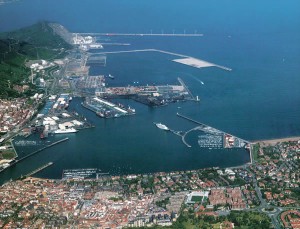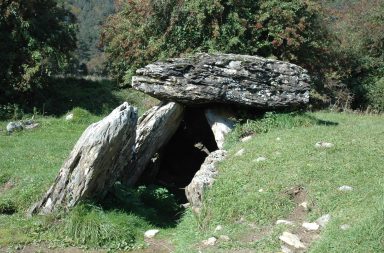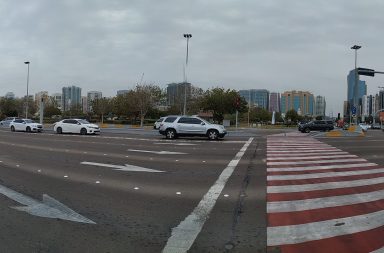An important element to consider in the case of Bilbao is its links not only with a cultural identity or a political entity but with a city-region which some of our best-known writers and researchers have called Euskal Hiria (The Basque City) (Basque Government,2002). This area of 21,000 km2 seamlessly encompasses cities of greater size located along the coast, from Bayonne and San Sebastian to Bilbao inland to Vitoria and Pamplona, together with other medium-sized and small towns. The population of this city-region reaches 3 million inhabitants.
Going beyond the boundaries of Basque geography, its area of influence and economic, social and logistical inter-dependence even reaches the borders of Santander (Cantabria), Burgos (Castilla), Logroño (La Rioja) and Bordeaux (Aquitaine), covering an area with six million citizens.
Consequently, any reference to Bilbao is not just limited to the 360,000 inhabitants registered as living in the municipality but to a city-region of between 3 and 6 million citizens with whom Bilbao negotiates in an asymmetric manner, through territorial planning, transport and mobility, economic and business activity, provision of services, further education and science, and, indeed, leisure itself in all its various spheres (culture, sport, tourism and recreation).
The regard which is shown towards leisure policies, projects, events, facilities, programmes and services is a reflection of a city which cares for its residents and at the same time embraces a floating population of visitors, sightseers or tourists, reaching the stated 6 million potential users of different types. The city has been undertaking projects and constructing leisure facilities whose significance transcends the borders of the city-region, as in the case of the Guggenheim Museum, the Euskalduna Conference Centre and Concert Hall, the Bilbao Exhibition Centre, Athletic Club de Bilbao or the Opera Season of the ABAO, (the Association of Friends of Opera of Bilbao).
In an intertwining sequence of negotiations and dialogues both possible and impossible, the fate of the municipality of Bilbao has been united throughout history with its neighbouring territories. In the beginning there were the anteiglesias– municipalities opposed to towns like Bilbao- who relinquished territory to the meager walled town until they were reduced to the neighbourhoods and districts which they are today (such as Abando, Begoña or Deusto) (Guiard,1912).
Later, there were townships along both banks of the river which had a history of agreements and disagreements regarding economic or port activity or political pre-eminence, until in the end they accepted the definition of their own population as bilbaínos – of Bilbao origin –as something natural, although they were in fact registered as inhabitants of these other municipalities (on the Left Bank – Barakaldo, Sestao, Portugalete and Santurtzi – and on the Right Bank – Erandio, Leioa and Getxo). These municipalities have shared the port, the industry, the location of services and the reception of waves of immigrants with the city of Bilbao for seven hundred years. In the same way, other towns, basically involved in the mining industry, operating in parallel with the industrial and port activity of the estuary, have found themselves sharing economic space with Bilbao since the nineteenth century (Trapaga, Ortuella, Abanto, Zierbena and Muskiz). Similarly, towns in the valley of Txorrieri parallel to the river (Loiu, Derio, Sondika, Lezama and Zamudio), have been used for the construction of infrastructures occupying large areas of land (airport, town cemetery, industrial estates, technological parks, football club training ground…) or for housing developments. They were originally annexed by Bilbao and later regained municipal autonomy in 1983, though by this time they were assimilated as part of the great metropolitan area. Even towns such as Basauri, Galdakao, Etxebarri, Zaratamo and Arrigorriaga, located on the rivers Nerbioi or Ibaizabal, beyond the municipal boundary of Bilbao, have gradually been trapped by the centripetal force of Bilbao.
Therefore, as well as being a municipality, Bilbao is also a metropolitan area covering some thirty towns where millions lead their daily lives. The idea of Bilbao as a metropolitan area surfaces in texts and statements by architects and town planners, such as the municipal architect Ricardo Bastida in the decades leading up to the Civil War (Urrutia,1985). The metropolis was conceived, in the middle of the Franco dictatorship, as an urban integration project in the Corporación Administrativa del Gran Bilbao (1946)- the Administrative Corporation of Greater Bilbao – (González Portilla,1995). In the nineteen eighties, with the arrival of democracy and self-government, with a view to municipal autonomy, the Área Funcional del Bilbao Metropolitano (Metropolitan Bilbao Functional Area) was included in the Directrices de Ordenación Territorial del Gobierno Vasco (Territorial Order Directives of the Basque Government) (Basque Government,1997). Later, in the nineties, the Asociación Bilbao Metropoli (Bilbao Metropolitan Association) and the Sociedad Bilbao Ría 2000 (Bilbao Ría 2000 Society), which will be referred to later, were created, meaning relational configuration and a project for the mentioned metropolitan area.
The phenomenon of leisure was taking on metropolitan characteristics. Initially, there were problems shared through industrialisation: overcrowding, pollution, developmentalism and social inequality. Leisure was seen as a problem (endless working days, child labourers, works canteens etc) or as an alternative to the problem (camps for child labourers, sport, healthy excursions, work culture programmes, etc.) (San Salvador del Valle,2006). Later, modernity (seeing leisure as a service and a product) and post-modernity (promoting leisure as an experience) (Monteguado,2008; Cuenca Amigo,2013) was paving the way in each municipality and in the metropolitan area as a whole. Today’s panorama includes a network of motorways, with the underground system and river that have become highways for leisure, transporting the phenomenon between various towns in the metropolis: from the city to the beach, from towns to musical shows or metropolitan sports centres, events for leisure on the estuary, popular fiestas shared by young people in a metropolis of mobility etc (Leisure Studies Institute,1992).





